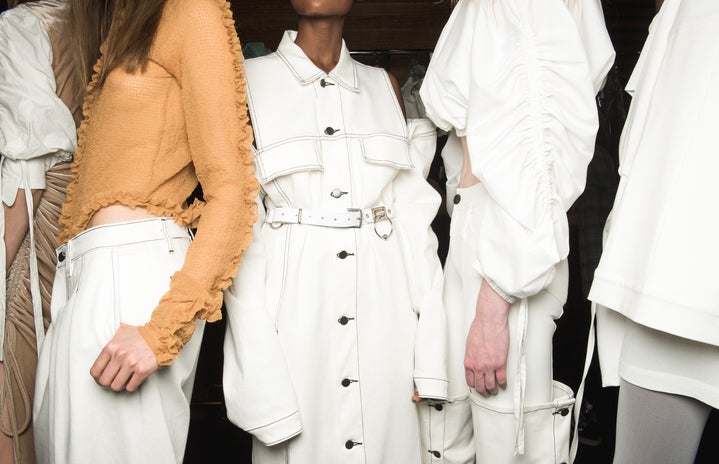In a world where trends constantly shift and new items are available faster than we can refresh our favourite online store, we should wonder about the social and environmental impact of fast fashion. Cue slow fashion, a solution to the problem of mass-produced clothing: ethically sourced and environmentally friendly fabrics and production methods, jobs for local seamsters, and a boost for our economy. However, aside from the actual cost, slow fashion comes with a hefty and exclusionary price tag.
The cost of slow fashion is high when one factors in the cost of materials, equipment, and paying staff an equitable wage. This justifies the often-exorbitant price of some items. While some slow fashion brands are competitively priced compared to large clothing retailers, some charge three to four times as much for, let’s face it, basic items that most consumers can source elsewhere. With a high rate of unemployment and the pandemic causing pennies to be pinched, affordability is going to trump ethics.
Inclusive sizing is an issue in almost all fashion, but slow fashion in South Africa is especially lacking. Larger sizes are often limited to a single item in a range, if at all, and I’ve yet to see an “extended size” fit someone above a size 14. With a UK 16-18 being the size of the average South African woman, disregarding the plus-size market is an ethical and financial mistake and should be a higher priority in the slow fashion industry. Limiting options for larger bodies forces women into buying fast fashion, and this makes the goal of the slow fashion industry – investing in long-lasting, ethically-made pieces that offer sustainable alternatives – seem counterintuitive.
So, what can we do about this? Here are two easy ways to make your ethical shopping experience more inclusive:
- Buy fast fashion “ethically”
-
Yes, this seems nonsensical at first, but buying from major retailers is not a sin! Spend your coins at retailers who are committed to sourcing and producing some products locally, creating jobs for seamsters and boosting our economy. Rather than buying new pieces every season, be conscious of your purchases. Invest in the basics and supplement with clothes and accessories that match most of your wardrobe. Being able to mix and match and knowing what you have at home = fewer impulsive purchases from the sale rail. Sorted!
- Try the old faithful
-
Thrift shopping. Shopping in person minimises the carbon footprint of deliveries, but whether you prefer to visit your local spot or support Instagram thrift stores, recycling clothes is better than adding new items to the cycle. Thrift shops are also usually family-run or support a charity, which is a bonus! And please, try to thrift items that fit you. “Thrift flipping” is cool but cutting up big clothing or wearing them as “oversized” limits the already minimal options for mid and plus-sized bodies and sends people with varying body sizes back to fast fashion.
Above all, don’t judge your friends for buying fast fashion. Accessible and affordable slow fashion is rare, and everyone deserves to look cute in whatever they can find and afford. Instead, ask your favourite local ethical brands to cater to larger sizes and stock a few affordable items! If fashion is made available people will invest in it, and the slow fashion industry can grow both in influence and inclusivity. It’s a win-win situation for everyone.


